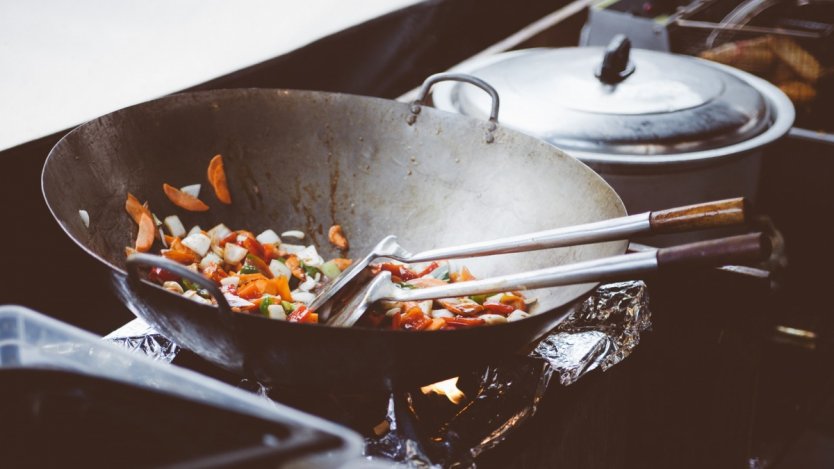As convenient as it is to get Chinese takeout, cooking it at home is easier than you think, and it gives you more control over the quality of the ingredients and the amount of salt and oil, making it a healthier alternative. So whether you’re preparing a multi-course meal over Chinese New Years or wanting to get more into cooking Chinese food, here are a few tips and a few common mistakes to avoid.
The wok and oil need to be hot, hot, hot
This is probably the most important thing to note when cooking Chinese food at home. In fact, the heat in the wok is so important that there’s a term for it in Chinese: wok hay, which loosely translates to air or the energy of the wok. The combination of the high heat and the motion of moving the wok or pan quickly cooks the food without burning it or letting it overcook in its own juices.
So whether it’s for a vegetable stir-fry, shrimp, noodles, or fried rice, be sure to heat the wok up over high heat, add the oil, and when the oil shimmers, then toss in the ingredients. Avoid overcrowding the wok, which lowers the heat.
Use a neutral oil with high smoke point
Traditionally, a lot of Chinese cooking is done with peanut oil because it has a high smoke point. Corn oil and canola oil are great alternatives.
Do not use olive oil for Chinese food. While it won't necessarily "break" the dish, it does have its own distinct flavour and it not the right variety for cooking over high heat.
Use the right sauce
It may sound obvious, but there are dozens of different kinds of prepared sauces that are commonly used in Chinese food, maybe even a dozen just for bean sauces—soy bean, black bean, broad bean, bean curd, fermented, spiced—and all with different flavours, so getting the right one is important. That goes for soy sauce as well. Make sure you're not using the light variety when the recipe calls for dark soy sauce (light soy sauce is saltier than dark soy sauce, which is used more for its colour). Double check the recipe to see which one it calls for to get the best results.
Don’t overcook noodles
Almost all Chinese noodle recipes require the noodles to be cooked or soaked separately before adding them to a soup, broth or stir fry, unless you're preparing cold noodles. For wheat noodles, make sure to check the cooking instructions and undercook the noodles slightly, drain, and give them a rinse under cool water to keep them from overcooking because they’ll be further heated in the final preparation. For rice noodles, much of the water absorption happens during the soaking of the noodles, so cooking takes very little time.
Have all your ingredients prepped, even sauces
Since stir-fries are made so quickly, you’ll want to ensure that all the ingredients are prepped and ready to go, even the sauces, by the time you heat up the wok. Unlike recipes with multiple steps that may be spaced some time apart, many recipes for Chinese cooking require things to be added in quickly and the wok to be hot and constantly moving, so you don't have time to be wrestling with stubborn lids or cutting vegetables.
Marinate meats before stir-frying
Whether it’s diced chicken that’s to be added to a fried rice, sliced beef for beef and broccoli or pork strips for noodles, they all benefit from a bit of marination before cooking to add flavour and tenderize the meat.
For a simple marinade, combine a touch of soy sauce, salt, sugar, cooking wine, oil, and a sprinkling of cornstarch to the meat. There should just be enough marinade to coat the meat.













